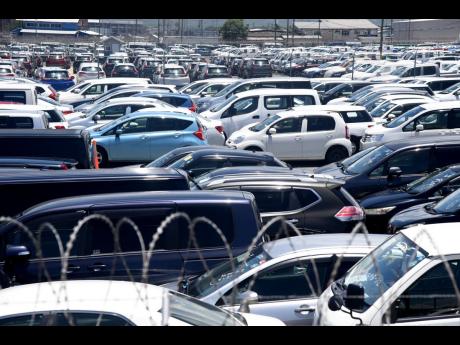New trade agreement means steep learning curve for auto industry
Imagine being asked to bake a cake but not being told what kind of cake you’ll be baking and knowing you’ll be judged on the results.
You might know you need milk, eggs, and flour, but whether the cake needs to be chocolate or carrot is pretty important, too, and will change what you pick up during your shopping trip.
That’s how Kristin Dziczek, vice-president of the Industry, Labor & Economics Group at the Center for Automotive Research in Ann Arbor, described the roll-out of the new trade deal replacing the North American Free Trade Agreement (NAFTA). The new agreement, one of the biggest milestones of Donald Trump’s presidency, took effect recently. The deal has had its critics, particularly those who are worried that all the uncertainty surrounding NAFTA was hurting the auto industry, but many analysts said NAFTA was overdue for an update.
There has also, however, been uncertainty as the date of implementation has approached for the United States-Mexico-Canada Agreement. Some of the specifics involving, for instance, labour value content rules, were just finalised and released in recent days.
“Exactly how the labour-value rule is going to be implemented, we found out this week,” Dziczek said of the rule dictating higher-wage work, at least US$16 an hour, for a percentage of vehicle manufacturing. Other rules focus on steel and aluminium and where vehicle parts are made in order to avoid tariffs.
Broad outlines are important, but the details are key when determining how specific parts in an automobile that is produced through a global supply chain are going to be classified under the trade deal.That means automakers and suppliers, who are still dealing with fallout from the COVID-19 pandemic and the resumption of manufacturing, are now scrambling to make sure they are in compliance, with limited time to digest the full impact on their operations. Fortunately for many, the federal government is providing some leeway.
US Customs and Border Protection, for instance, issued a 36-page Implementing Instructions booklet a few weeks ago, noting that the agency understands time may be needed to comply with the new rules. Until the end of the year, the agency said it would focus on education and outreach efforts.
“[Customs and Border Protection] will take into account the difficulties importers may face in complying with the new rules, as long as importers are making satisfactory progress toward compliance and are making a good-faith effort to comply with the rules to the extent of their ability,” the agency said.
While extra time is important in this context, Dziczek noted that the rules are the rules, and they’ve now gone into effect.
“You’ve got to be in compliance now. [The authorities are] expecting good-faith compliance while the certification systems get up and running. … You have to be meeting the letter of the law starting today,” she said.
Auto trade groups, which have been supportive of the trade deal, acknowledged the difficult task at hand.
“The USMCA … is a complex agreement, and our member companies are trying to get it right, but that’s different for every company. But they are dedicated to this region and their investment in this market, and we appreciate the extra time that [Customs and Border Protection] has provided to allow us to comply with all the new requirements,” said Jennifer Safavian, president and CEO of Here for America, an initiative of Global Automakers, which speaks for foreign automakers in the United States.
Former Missouri Gov Matt Blunt, president of the American Automotive Policy Council, praised the agreement but also discussed the challenges. The council represents Ford, General Motors, and Fiat Chrysler Automobiles.
“The rapid timeline for entry into force of the USMCA will require tremendous efforts from American automakers with close coordination between industry and government to help ensure successful implementation of the agreement. We look forward to an ongoing dialogue with the administration and other auto industry stakeholders to ensure the USMCA can achieve its full potential,” Blunt said in a statement.
The important thing to keep in mind, according to Fernando Gonzalez Saiffe, the consul of Mexico in Detroit, is that the agreement should have a positive impact on employment in places like Michigan and be beneficial for North America as a whole.
“This is going to bring more inputs and more jobs to the North American region,” he said. “The rules of origin will be more enforced, and the North American region, we hope, [is] going to remain as the most competitive and efficient region in the world.”
– TNS




